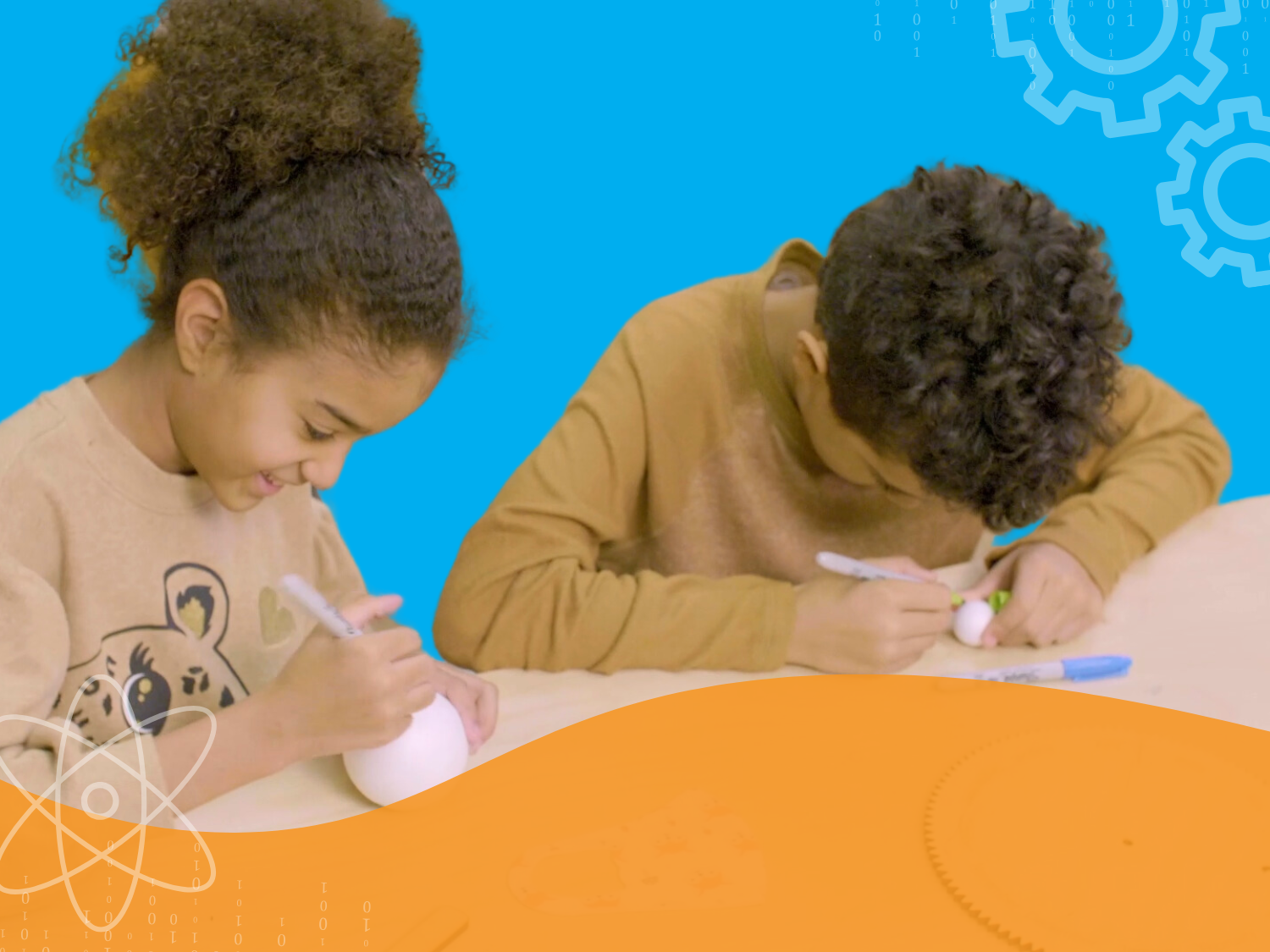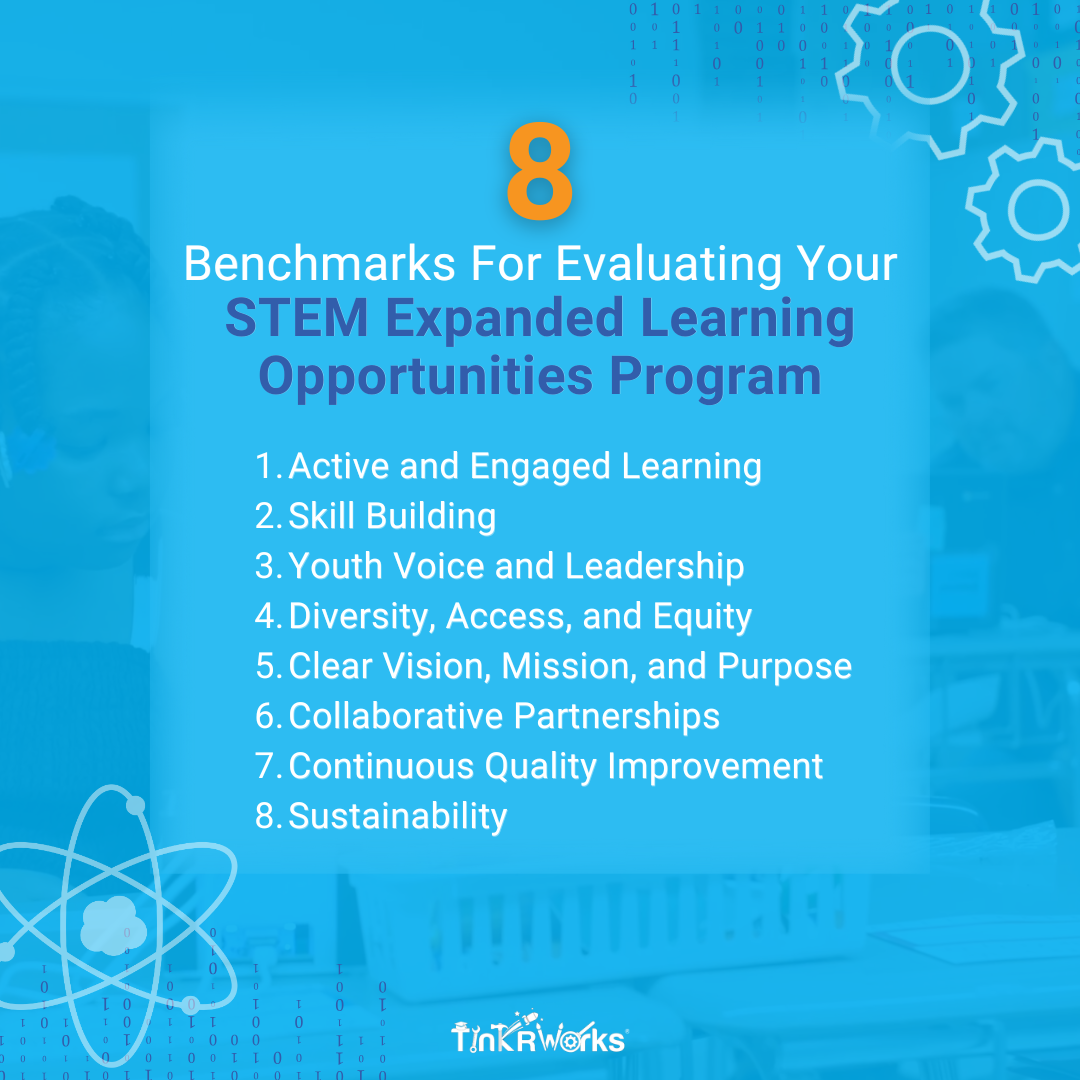Let’s face it. Due to financial constraints, schools often rely on existing core ancillary materials and underutilized supplemental products to extend learning with their students. Granted, it may seem like the logical thing to do. But research shows that after school and summer school programs offer a unique opportunity for students to enjoy an altogether different experience. Whether in a STEAM Club setting, after school, or part of an intensive summer school, every student can benefit from an Expanded Learning Opportunities Program (ELOP) that aligns to the following benchmarks outlined below.
In this article, we will cover the eight ways in which a STEM Expanded Learning Opportunities Program should be evaluated in order to ensure the greatest outcomes for students and teachers alike.
It is helpful to understand the goals of a STEM Expanded Learning Opportunities Program when implementing one. The following benchmarks, or standards, should be considered when evaluating a new program for an after school or summer school setting. Use these eight benchmarks to guide you as you build a new program or evaluate the efficacy of an existing one.

What is a STEM Expanded Learning Opportunities Program?
Expanded Learning Opportunities Programs—which can take place before school, after school, or during break in the school year—focus on developing the academic, social, emotional, and physical needs and interests of students through hands-on, engaging learning experiences. The ideal Expanded Learning Opportunities Programs are student-centered, results driven, include community partners, and complement, but do not replicate, learning activities in the regular school day and school year. The most effective programs provide opportunities to engage pupils in enrichment, play, nutrition, and other developmentally appropriate activities. STEAM learning can be combined easily with after school or summer school programs. For many schools, scheduling or financial constraints can make it difficult to implement a successful hands-on STEAM curriculum. Using these supplemental programs to fill the gaps and offer further opportunities for students to engage with STEAM concepts can be a simple answer to this problem. Interested in starting a STEM Expanded Learning Opportunities Program at your school? Our Implementing Successful Expanded Learning STEAM Programs Guide can help you get started. Within this comprehensive guide, we delve into the fundamental elements of thriving STEAM expanded learning initiatives, equipping you with actionable strategies, insights, and tools for seamless execution.Eight Benchmarks For Evaluating A Stem Expanded Learning Opportunities Program
Point-of-Service Quality Standards
1. Active and Engaged Learning: Program design and activities reflect active, meaningful, and engaging learning methods that promote collaboration and expand student horizons. What to look for:- Provides a variety of STEAM activities that are hands-on, project-based, and result in a culminating product.
- Uses participant feedback, assessments, and evaluations to guide the development of training, curricula, and STEAM projects that fully meet participants’ needs and interests.
- Supports projects and activities in which participants demonstrate mastery by working toward a final product or presentation.
- Supports activities in which participants develop and demonstrate 21st century skills.
- Provides participants with opportunities and space to share their viewpoints and dialog with other students.
- Provides opportunities for participants to partner with and/or mentor other students.
- Provides opportunities for participants to actively exercise their leadership skills and address real world problems that they identify in their communities. These are activities that require critical thinking, debate, and action planning.
- States its explicit commitment to diversity and equity in its outreach materials and/or policies.
- Creates a welcoming learning environment and supports the diversity of the students through program materials.
- Celebrates diversity related to participants’ race, religion, gender, age, income level, national origin, and physical ability.
Programmatic Quality Standards
5. Clear Vision, Mission, and Purpose: The program has a clearly defined vision, mission, goals, and measurable outcomes that reflect broad stakeholder input and drive program design, implementation, and improvement. What to look for:- Ensures that its vision and mission complement each other and are reflected in program goals and outcomes.
- Monitors progress toward its goals and outcomes.
- Regularly communicates, reviews, and makes appropriate changes to goals and outcomes in collaboration with all stakeholders.
- Creates opportunities to engage families, fellow students, and site teachers to learn about the work of participant students.
- Trains staff to work collaboratively with internal and external stakeholders to achieve program goals.
- Develops a set of guiding questions that are related to the program design, desired program outcomes, and impact.
- Shares lessons learned and key outcomes from the quality improvement process with stakeholders and requests their feedback.
- The program plans for sustainability in its initial design and evolves its strategies over time.
- Monitors STEAM trends and makes changes to adapt to emerging threats, opportunities, and conditions.
- Secures new resources to maintain a diverse portfolio of sources.
In Conclusion
Offering students additional STEAM education opportunities through a STEAM Expanded Learning Opportunities Program is a great way to ensure that they are ready for a 21st century workforce in the future. It also allows students more time to engage with STEAM concepts, which can ultimately help them develop a passion for STEAM. Using the eight benchmarks listed above and our Implementing Successful Expanded Learning STEAM Programs Guide, you can feel confident that your STEAM education program is successful for students, their parents, teachers, and administrators. It has never been so easy to get started with a STEAM learning program! Do not miss your opportunity to influence the next generation of STEAM innovators.








